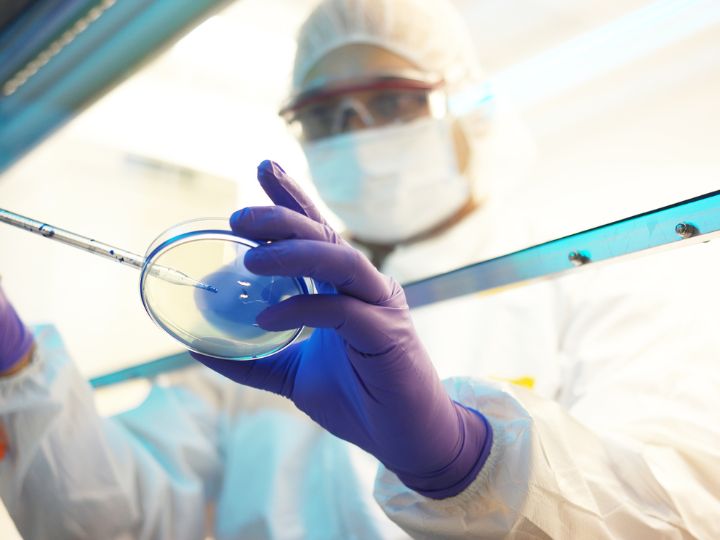UH Engineer Metin Akay Featured in Study Spotlighting Contributions to Biomedical Engineering Advancements by 50 Scientists
Metin Akay, founding chair of the Biomedical Engineering Department at the University of Houston and John S. Dunn Professor, is one of 50 top scientists from 34 elite universities to publish a roadmap for groundbreaking research to transform the landscape of medicine in the coming decade.

Published on behalf of the Institute of Electrical and Electronics Engineers (IEEE), the world’s largest technical professional organization dedicated to advancing technology for humanity and the IEEE Engineering in Medicine and Biology Society (IEEE EMBS), the paper focus on five cutting-edge advances in biomedical engineering and their applications in medicine.
“This paper represents a valuable guideline in the advancement of engineering innovations in healthcare, so that we can improve the quality of healthcare, reduce costs, ultimately, improve lives of people worldwide,” said consortium member Akay. “We have a shared commitment to advancing patient-centric technologies, and healthcare efficacy and accessibility, especially for major healthcare challenges such as chronic conditions, substance abuse and mental disorders.”
Though the ongoing meetings and group effort took more than three years, the position paper was the result of a two-day workshop organized by IEEE EMBS and the Department of Biomedical Engineering at Johns Hopkins University and the Department of Bioengineering at the University of California San Diego.

Through the workshop, the researchers identified five primary medical challenges that have yet to be addressed, but by solving them with advanced biomedical engineering approaches, can greatly improve human health.
The Five Grand Challenges Facing Biomedical Engineering
- Bridging precision engineering and precision medicine for personalized physiology avatars
In an increasingly digital age, we have technologies that gather immense amounts of data on patients, which clinicians can add to or pull from. Making use of this data to develop accurate models of physiology, called “avatars” – which take into account multimodal measurements and comorbidities, concomitant medications, potential risks and costs – can bridge individual patient data to hyper-personalized care, diagnosis, risk prediction, and treatment. Advanced technologies, such as wearable sensors and digital twins, can provide the basis of a solution to this challenge.
- The pursuit of on-demand tissue and organ engineering for human health
Tissue engineering is entering a pivotal period in which developing tissues and organs on demand, either as permanent or temporary implants, is becoming a reality. To shepherd the growth of this modality, key advancements in stem cell engineering and manufacturing – along with ancillary technologies such as gene editing – are required. Other forms of stem cell tools, such as organ-on-a-chip technology, can soon be built using a patient’s own cells and can make personalized predictions and serve as “avatars.”
- Revolutionizing neuroscience using artificial intelligence (AI) to engineer advanced brain-interface systems
Using AI, we have the opportunity to analyze the various states of the brain through everyday situations and real-world functioning to noninvasively pinpoint pathological brain function. Creating technology that does this is a monumental task, but one that is increasingly possible. Brain prosthetics, which supplement, replace or augment functions, can relieve the disease burden caused neurological conditions. Additionally, AI modeling of brain anatomy, physiology, and behavior, along with the synthesis of neural organoids, can unravel the complexities of the brain and bring us closer to understanding and treating these diseases.
- Engineering the immune system for health and wellness
With a heightened understanding of the fundamental science governing the immune system, we can strategically make use of the immune system to redesign human cells as therapeutic and medically invaluable technologies. The application of immunotherapy in cancer treatment provides evidence of the integration of engineering principles with innovations in vaccines, genome, epigenome and protein engineering, along with advancements in nanomedicine technology, functional genomics and synthetic transcriptional control.
- Designing and engineering genomes for organism repurposing and genomic perturbations
Despite the rapid advances in genomics in the past few decades, there are obstacles remaining in our ability to engineer genomic DNA. Understanding the design principles of the human genome and its activity can help us create solutions to many different diseases that involve engineering new functionality into human cells, effectively leveraging the epigenome and transcriptome, and building new cell-based therapeutics. Beyond that, there are still major hurdles in gene delivery methods for in vivo gene engineering, in which we see biomedical engineering being a component to the solution to this problem.
With more than 12,000 members residing in some 97 countries around the globe, IEEE EMBS fosters fellowships and provides access to best practices, new information, innovative ideas, and a variety of expert opinions focusing on biomedical engineering–one of science’s fastest growing fields.

